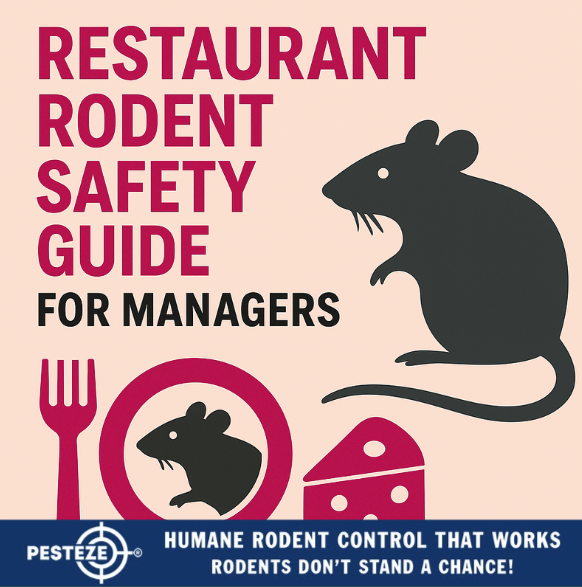RESTAURANT RODENT PREVENTION GUIDE: FOOD SAFETY FIRST

RESTAURANT RODENT PREVENTION GUIDE: FOOD SAFETY FIRST
SUMMARY
Rodents are one of the most dangerous threats to restaurant food safety, leading to contamination, health code violations, and customer complaints. Learn how to prevent infestations with proactive measures that safeguard your food, staff, and reputation.
FEATURES
-
Entry Point Control: Seal cracks, doors, and utility gaps to block rodent access.
-
Food Storage Protection: Use airtight containers and elevate supplies off the floor.
-
Sanitation Practices: Maintain strict cleaning routines in kitchens and dining areas.
-
Monitoring Systems: Set traps or electronic devices to detect rodent activity early.
-
Safe Removal Solutions: Partner with licensed pest control professionals.
-
Staff Awareness Training: Educate employees on prevention and reporting protocols.
GUIDE DESCRIPTION
Restaurants face unique challenges when it comes to rodent prevention, as the combination of food, waste, and foot traffic creates an ideal environment for pests. A single rodent sighting can result in health code penalties, negative reviews, and long-term damage to customer trust. That’s why prioritizing a rodent prevention plan is critical to maintaining food safety standards.
One of the most effective prevention methods is entry point control. Mice and rats can slip through even the smallest cracks, so restaurants must regularly inspect walls, baseboards, utility lines, and door frames. Sealing these openings with durable materials like steel mesh or caulk helps eliminate access routes.
Food storage is another key defense. Supplies should always be kept in rodent-proof containers and stored at least six inches off the ground. This not only prevents contamination but also makes it easier to spot signs of rodent activity before it escalates.
Maintaining strict sanitation practices is equally vital. Kitchens, prep areas, and dining spaces should be cleaned daily to eliminate crumbs, grease, and spills that attract rodents. Trash bins must be emptied regularly and kept covered at all times, while dumpsters should be located away from building entrances.
Monitoring systems add another layer of protection. Simple traps or advanced electronic devices can quickly alert staff to rodent activity, allowing managers to respond before a full infestation develops. Early detection is key to minimizing health and safety risks.
When removal is necessary, safe and effective methods should always be used. Partnering with a licensed pest control company ensures that professional-grade traps, baits, or exclusion techniques are applied correctly while protecting food safety and customer health.
Finally, staff training is a cornerstone of rodent prevention. Employees should know how to spot droppings, gnaw marks, or nests and understand the proper reporting steps. Regular training sessions help reinforce these responsibilities, turning staff into proactive defenders of food safety.
By combining entry control, proper storage, sanitation, monitoring, removal, and training, restaurants can significantly reduce the risk of rodent infestations. A strong prevention strategy not only ensures compliance with food safety laws but also protects your reputation and provides guests with a clean, enjoyable dining experience.
- Aahna Barma


Comments 0